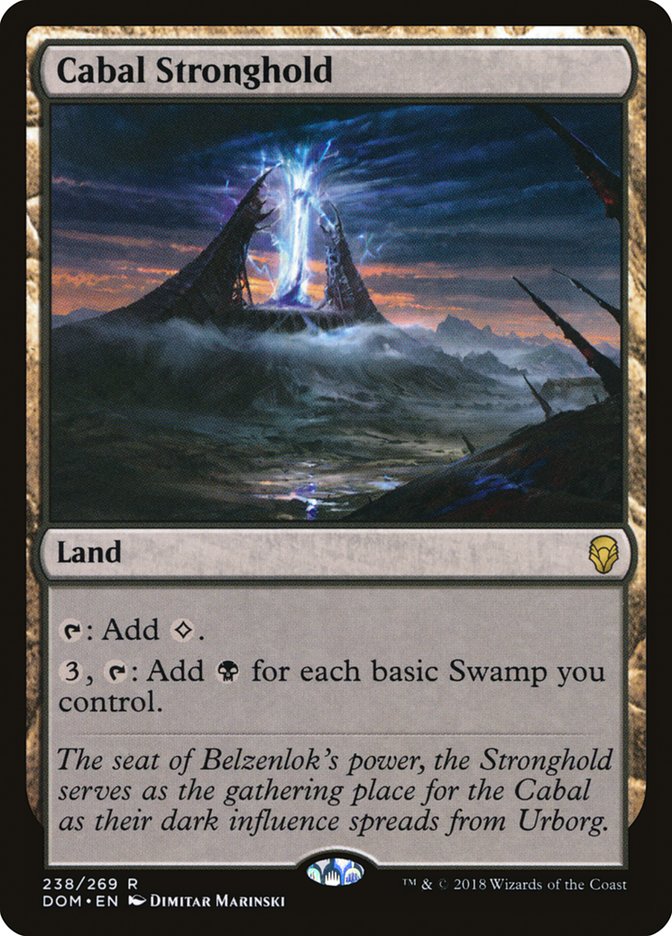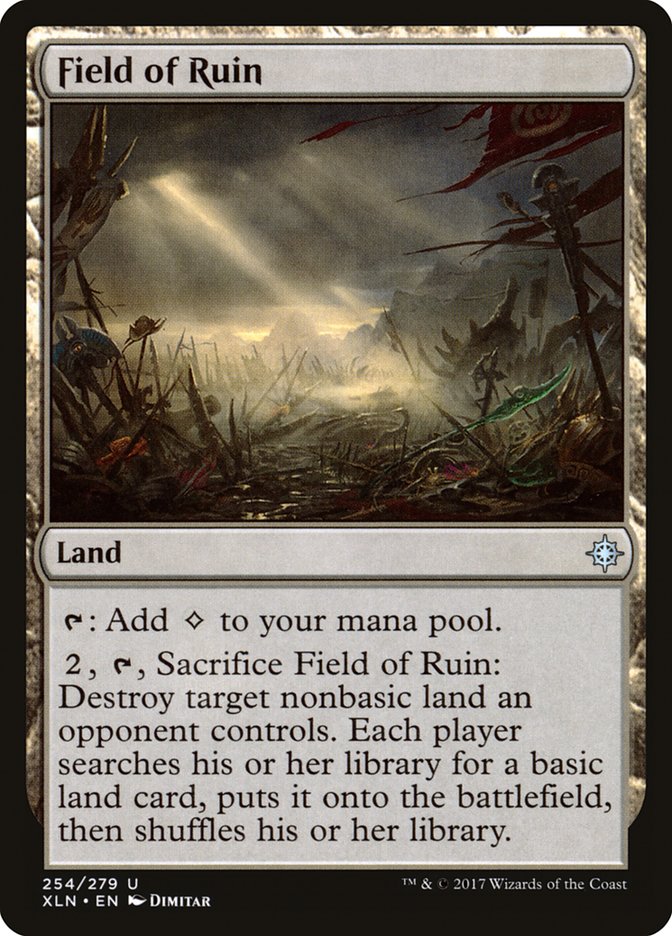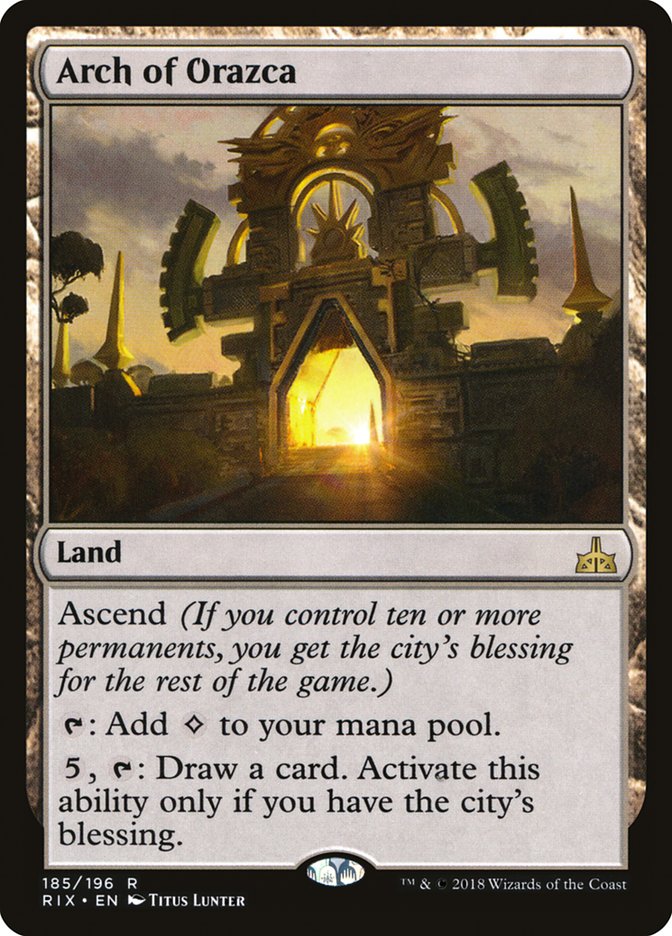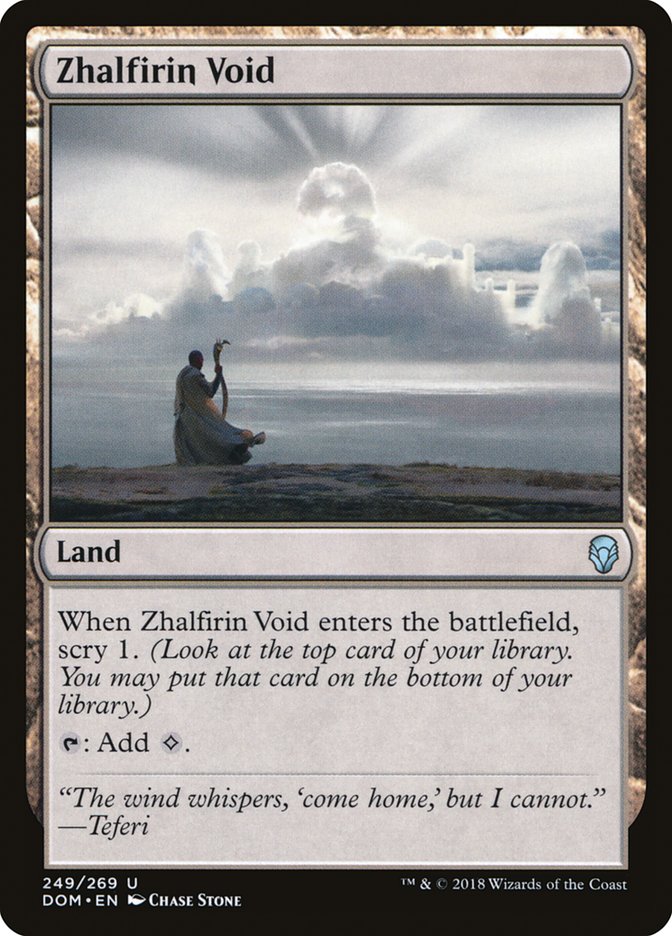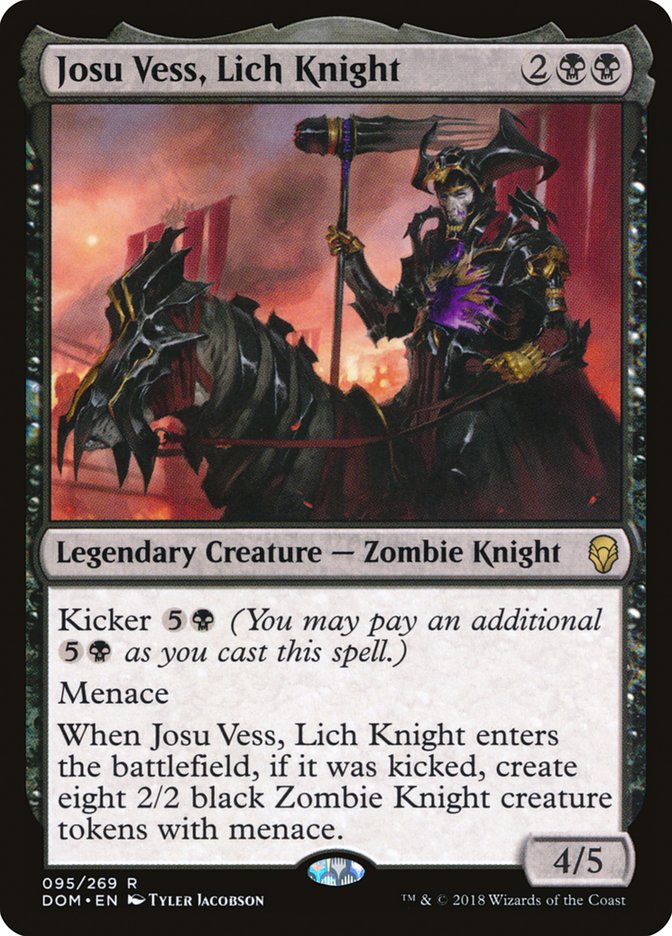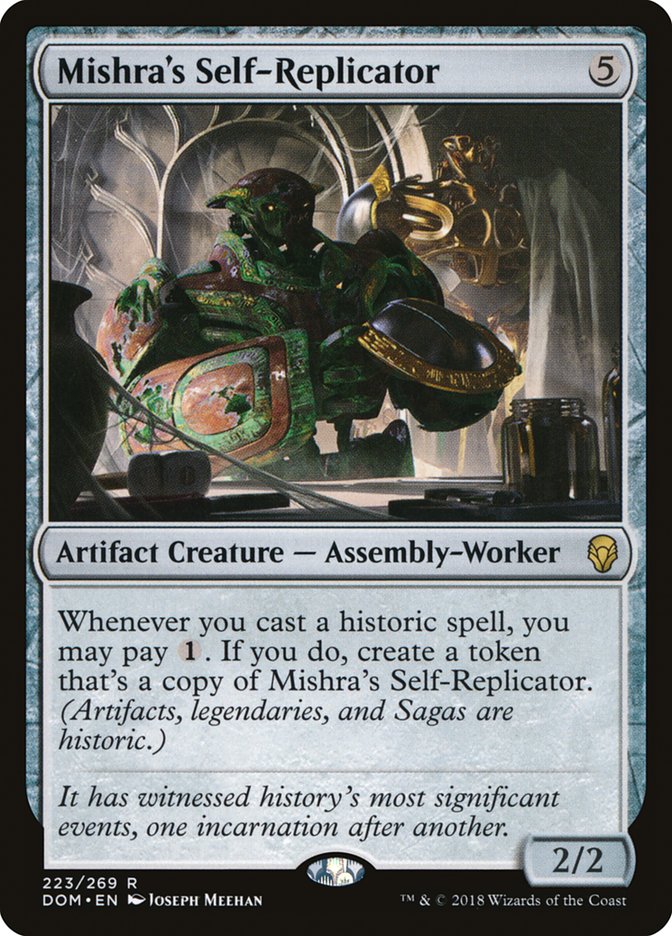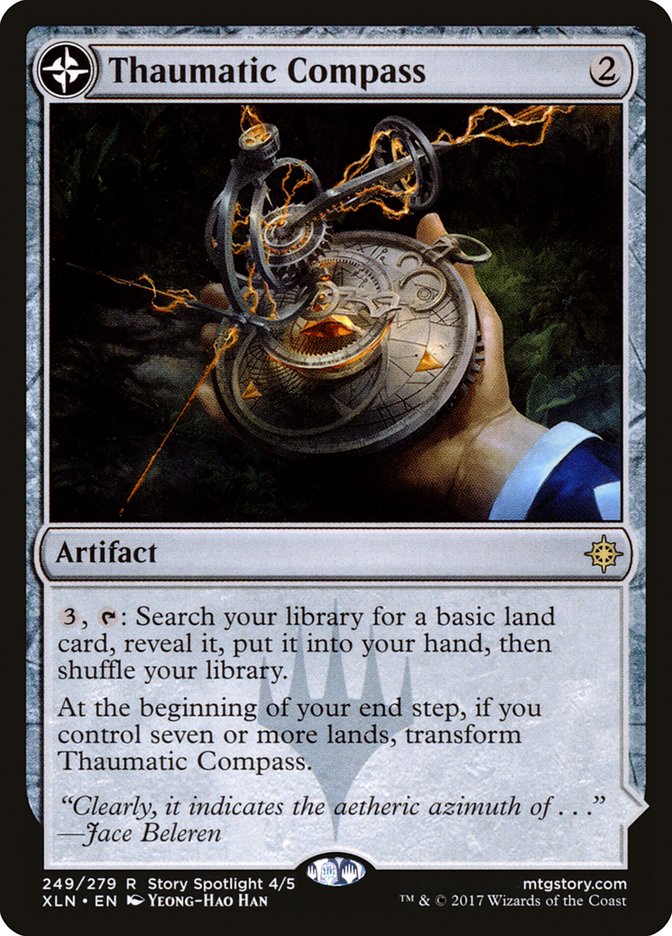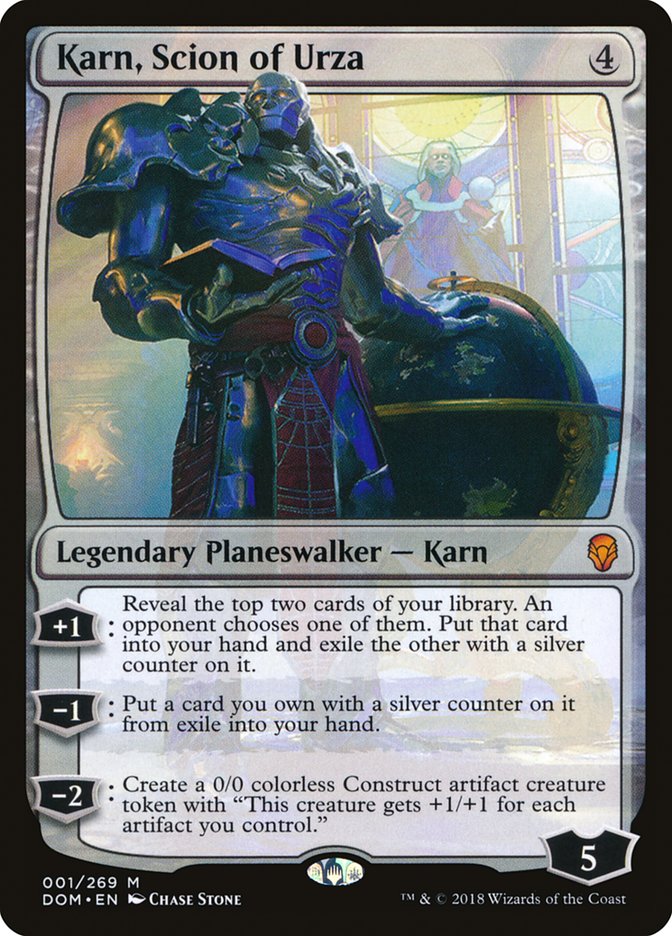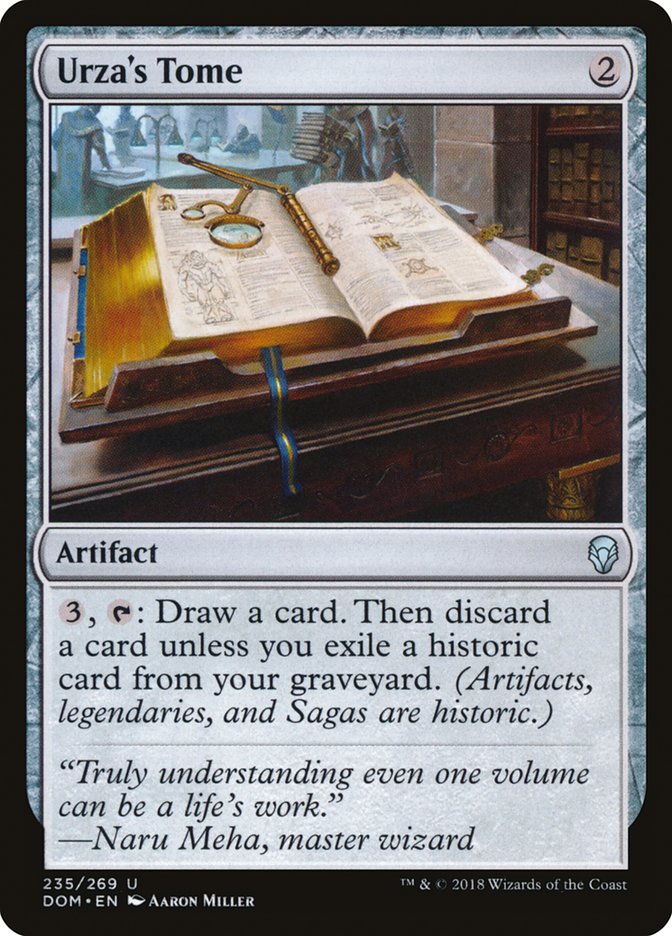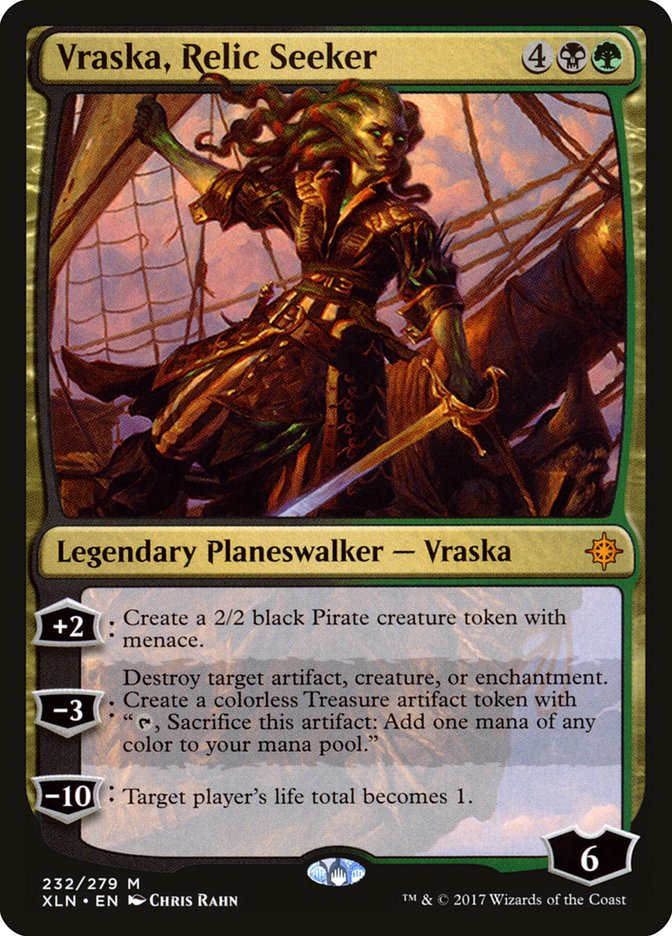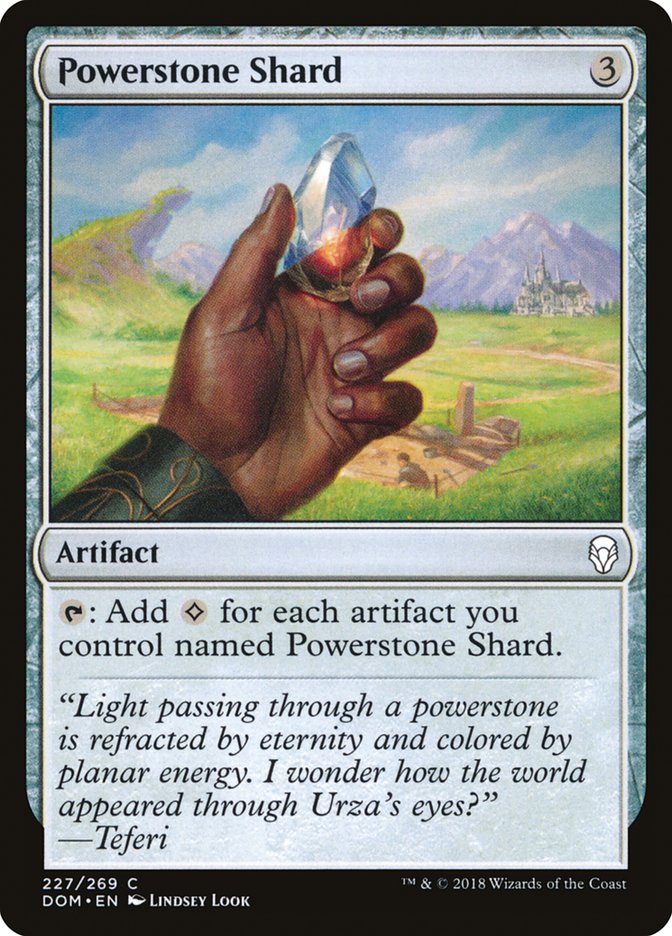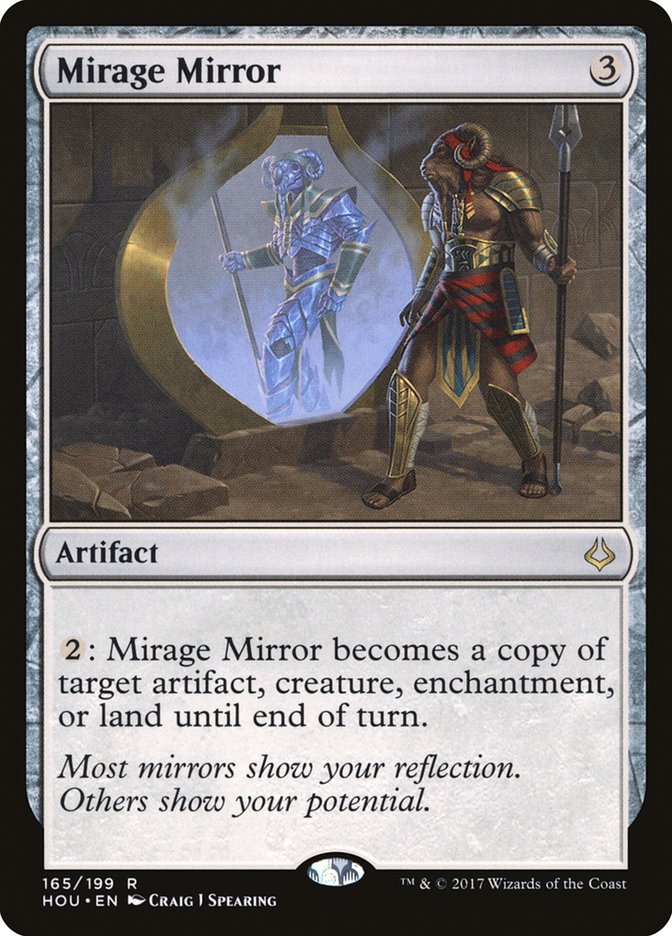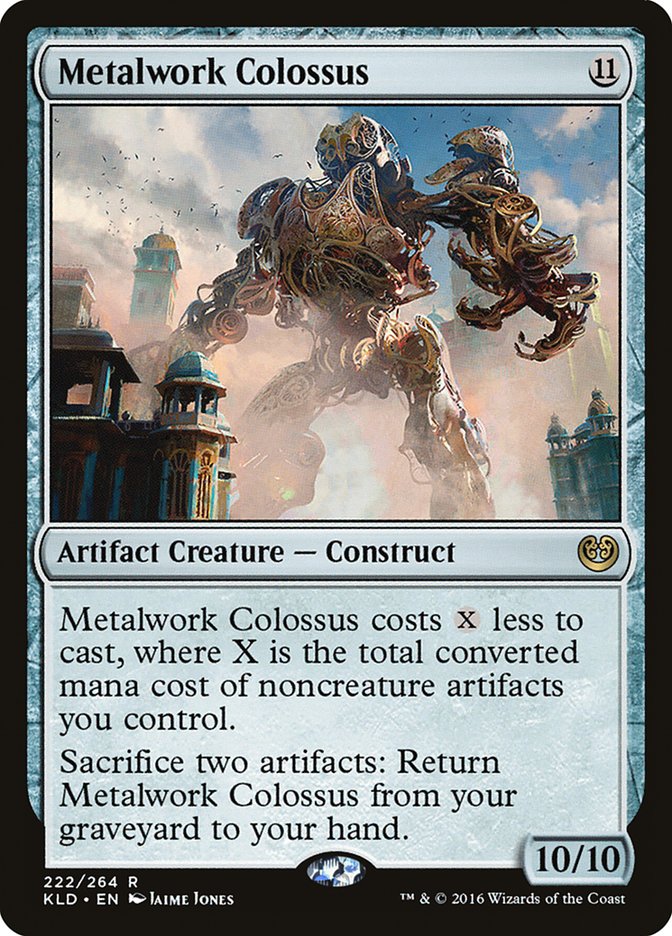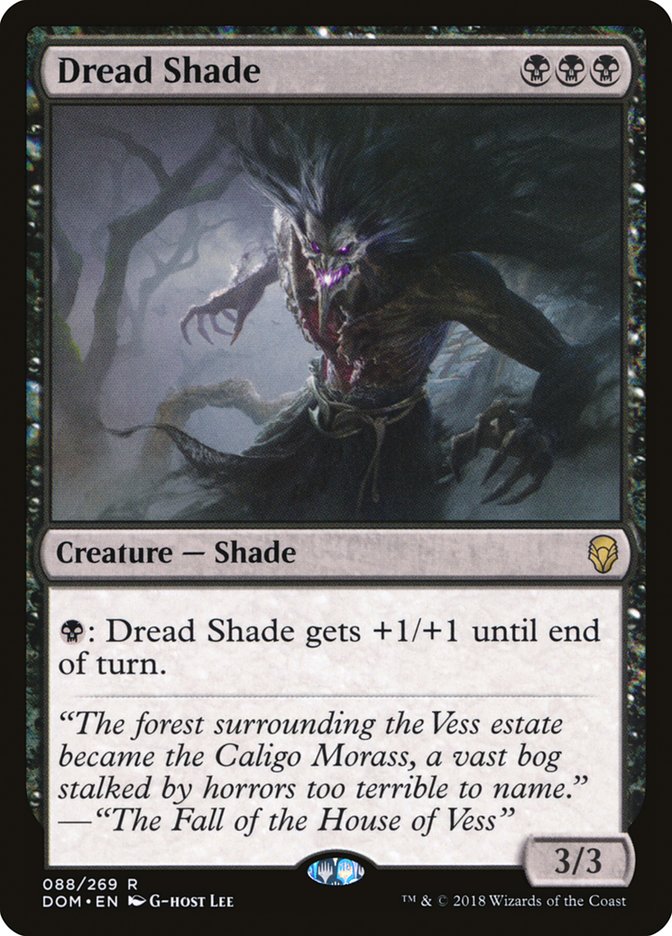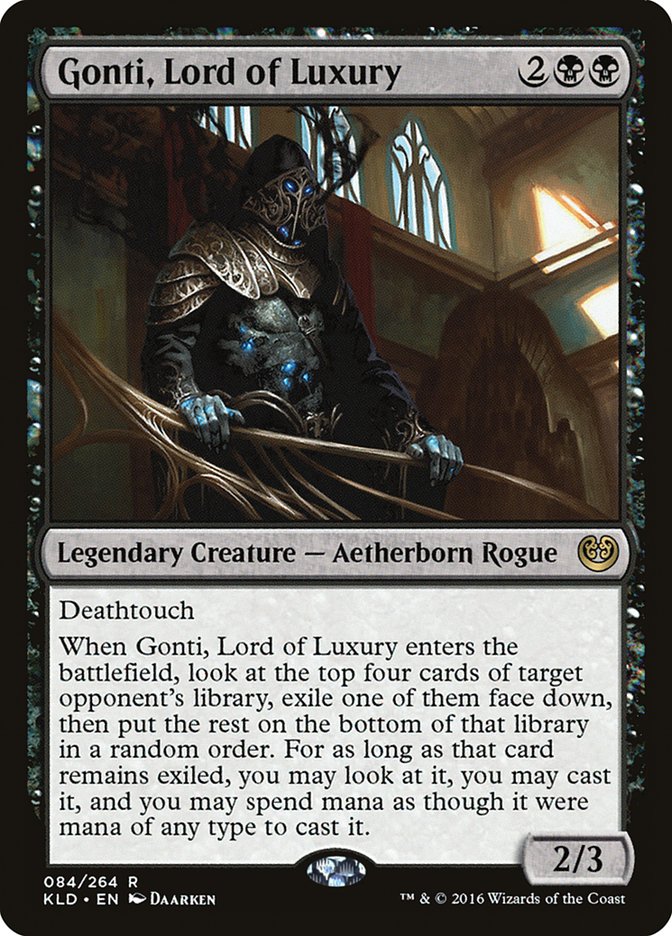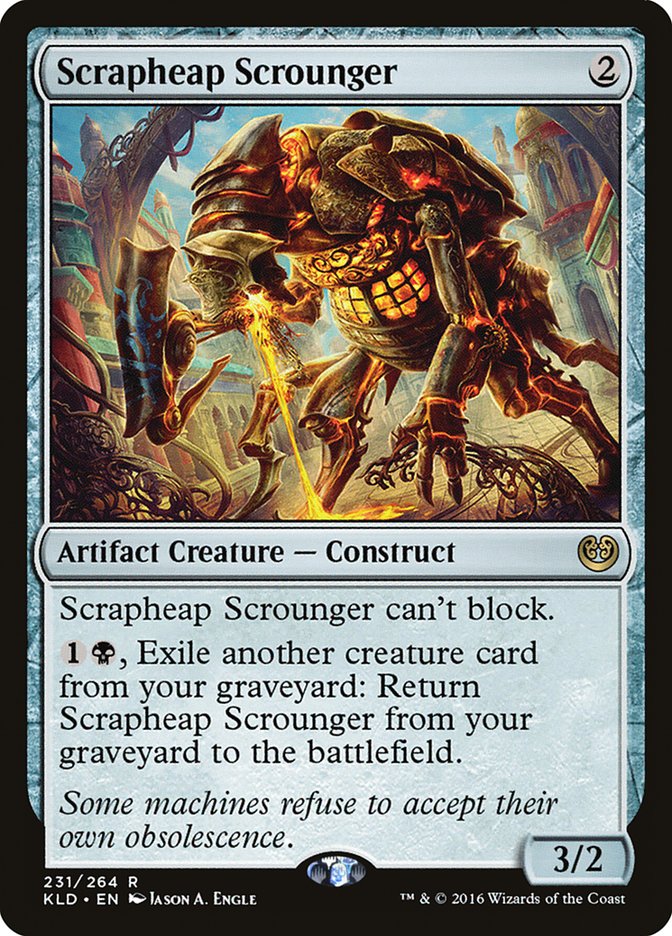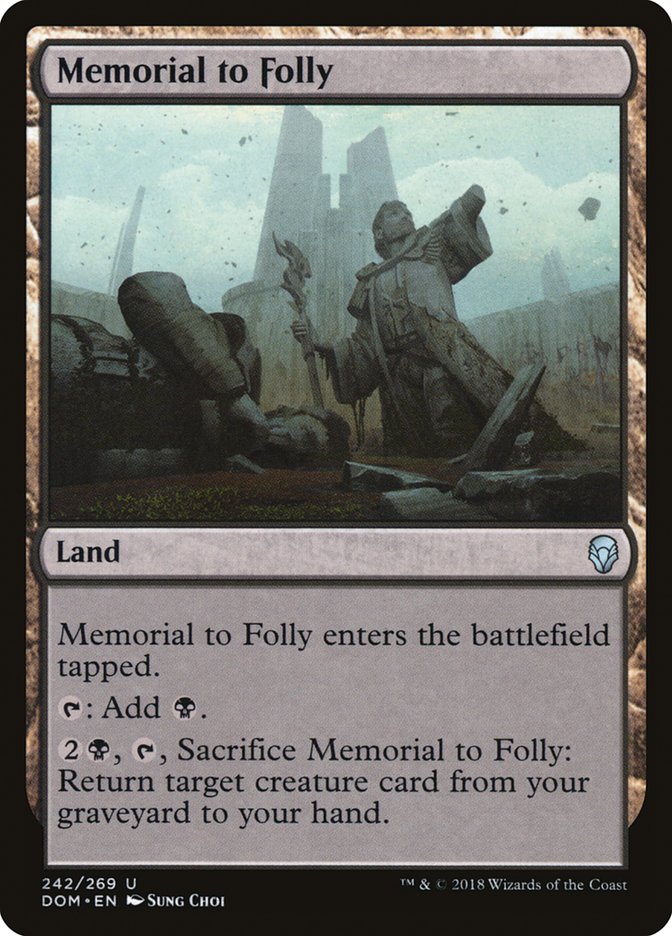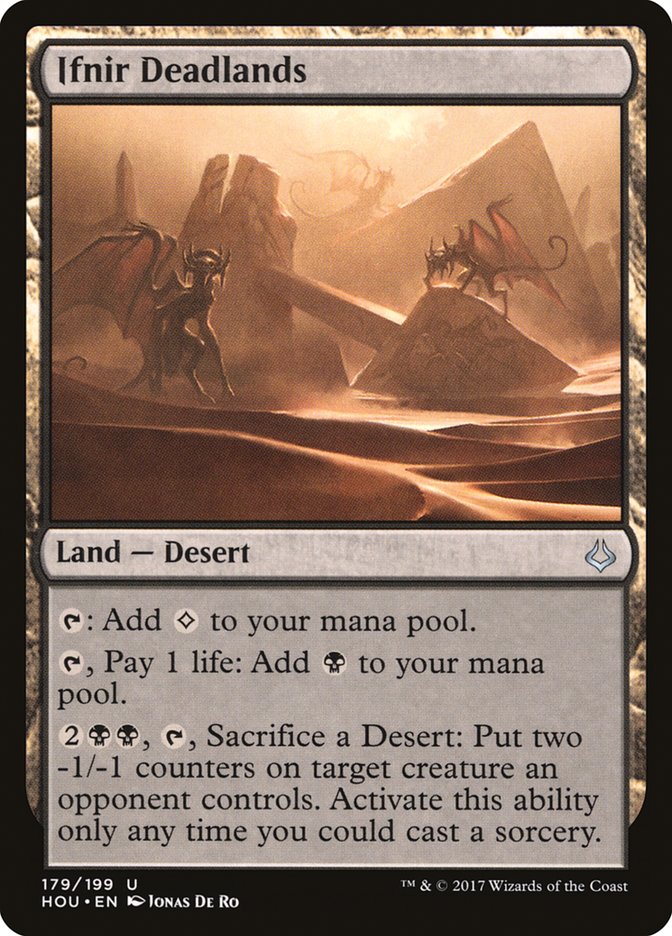I love a card that tells me exactly what it wants to be doing, and Cabal
Stronghold is precisely that kind of card. Only basic Swamps? Got it, we’re
playing a mono-black deck. Payoff is a lot of mana, but only in the very
late game? Control it is. Those are some strict requirements, so how good
this is largely depends on how good Mono-Black Control is, but just so we
know what we’re signing up for, exactly how much will this card be doing
for us?
On turn five, if you have this and four Swamps, you can spend three mana
and tap this land to get four mana, which means you’re breaking even, of
course, so at this point, your payoff is that your colorless land starts
tapping for black mana. That means that on turn six, with five Swamps,
you’re now able to make seven mana, and each additional Swamp you play
increases the total amount of mana you can make by two. If you have six
Swamps and this, you have nine mana, and if you have five Swamps and two of
these you have nine mana. If you have seven Swamps and one Cabal Stronghold
you have eleven mana, and if you have six Swamps and two Cabal Strongholds
you have twelve, and that’s about as explosive as you can hope to
get–tweleve mana for eight lands. It ramps up from there, of course, but
let me be clear that this land is anything but dangerous. The payoff this
offers is extremely small.
The good news is that the cost to playing it is also very small. It enters
the battlefield untapped and wants to go in decks that have more than
enough black mana to cast their spells (though potential difficulties exist
if you’re trying to play cards like Dread Shade–okay, maybe only precisely
Dread Shade in Standard). Well, okay, the cost is small, provided you were
looking to play a mono-black deck and you weren’t seriously invested in
having other colorless lands.
About that–is this really better than the other colorless offerings in
Standard? We’re talking about cards like Field of Ruin, Arch of Orazca,
Zhalfirin Void, maybe Inventors’ Fair. Honestly, those can be really good,
so this might be a problem. The good news is that Field of Ruin isn’t
actually that bad with Cabal Stronghold; by the time you’re trying to make
more mana with Cabal Stronghold, you can probably have converted your Field
of Ruin into a Swamp. The others are good, but maybe we can squeeze an Arch
into a Cabal Stronghold deck?
We can figure that out later. The question is, what are we doing in our
mono-black deck anyway?
We’re going to want some profitable ways to use excessive amounts of mana
in the late game that aren’t blank before that. Fortunately, kicker is a
great mechanic for that. Josu Vess, Lich Knight is a great example of a
card that we can play normally if we need to, but that can also take over a
game if we’re tapping eight lands to make twelve mana.
Another weirdly interesting card to use a lot of mana is Mishra’s
Self-Replicator. At first glance, this didn’t look like a playable card to
me, but if you have a lot of mana and a lot of historic spells, you can
play this and make one or more copies immediately, and then you start
adding kicker X, make X 2/2s to all your historic spells.
Powerstone Shard and Gilded Lotus are other ways that our deck can
eventually make huge amounts of mana, so it’s nice to see that we can have
some redundancy.
A few other cards from Dominaria offer some interesting things to
do with a lot of mana–specifically Final Parting and Yawgmoth’s Vile
Offering. Final Parting can find whatever creature or planeswalker you want
and put it in your graveyard while finding Yawgmoth’s Vile Offering to get
it back. You could also play one Lingering Phantom to find with Final
Parting for when you really need to grind.
One truth about Cabal Stronghold is that it’s not going to do anything for
us if our deck is constructed in such a way that we’re missing land drops,
basically ever. Given Mono-Black Control’s tendency to rely on a lot of
cards that trade on a one for one basis with the opponent’s cards, this
means we’re going to need ways to draw extra cards or we’re simply going to
run out of resources. This means we want cards like Thaumatic Compass,
Karn, Scion of Urza, or Urza’s Tome.
The best way to use excessive amounts of mana in Standard, as far as I’m
concerned, is Mastermind’s Acquisition, which can give you access to
extremely expensive finishers like Torment of Hailfire without forcing you
to risk drawing those cards when you need something reasonable to do in the
mid game.
The best way to get excessive amounts of mana may be Azor’s Gateway, but
there are a lot of ways to get slightly more reasonable large amounts of
mana.
Okay, let’s start looking at some lists:
Creatures (9)
- 2 Gonti, Lord of Luxury
- 4 Walking Ballista
- 1 Tetzimoc, Primal Death
- 1 Demonlord Belzenlok
- 1 Josu Vess, Lich Knight
Planeswalkers (2)
Lands (25)
Spells (24)

This is kind of a generic black control build. I think the interaction
between Gilded Lotus and Bontu’s Last Reckoning is important to this kind
of deck, allowing you to catch up on the battlefield after spending mana to
get to your late game, while still being able to continue to interact on
the following turn.
Huge Walking Ballistas are a large part of this deck’s end game, and
Walking Ballista is very much in the spirit of kicker cards, in that it’s
functional at all points of the game but can get really out of hand.
Vraska, Relic Seeker is a high impact card to Mastermind’s Acquisition that
gives you a way to deal with enchantments or artifacts that your mono-black
deck otherwise wouldn’t be able to answer. You can only cast it with
treasure or Gilded Lotus, but that’s okay because you’ll never have it in
your hand when you don’t have one of those things.
Next, let’s look at something more focused:
Creatures (17)
- 4 Metalwork Colossus
- 4 Foundry Inspector
- 1 Cogwork Assembler
- 4 Walking Ballista
- 1 Mishra's Self-Replicator
- 3 Traxos, Scourge of Kroog
Lands (24)
Spells (19)

So, I intended this as an artifact-based black control deck, but then I
figured I could fill the deck out with artifacts, and at that point, you
get way more out of colorless lands than Cabal Stronghold, so I figured I’d
look at what an entirely colorless deck might look like.
This is one of those decks where I’m not sure how it plays. I’m pretty sure
you can do some ridiculous things once it gets going with Powerstone Shard,
maybe Mirage Mirror copying Powerstone Shard, Paradox Engine, Urza’s Tome,
and Cogwork Assembler. Mostly, you’re just attacking with Traxos, Metalwork
Colossus and large Walking Ballistas, but every now and then things can
definitely get weird.
The basic lands are there for Field of Ruin, and it’s a mix to maximize the
chance that you can use activated abilities of things you copy with Mirage
Mirror.
Without real access to removal spells, obviously I worry about this deck’s
ability to interact, especially against fast or evasive creatures. I
suspect that just trying to clock your opponent with giant artifact
creatures won’t be an effective strategy, but it’s interesting that there
are enough colorless cards to work with that you can consider it.
One of the trickier aspects of trying to build a black deck in this format
is that so many of the cards you want cost four mana: Gonti, Lord of
Luxury; Josu Vess, Lich Knight; Vraska’s Contempt; Karn, Scion of Urza;
Ravenous Chupacabra; and Mastermind’s Acquisition are all four mana.
Another tricky part is that Glint-Sleeve Siphoner is one of black’s best
cards, but it doesn’t play very well with all Swamps and also wants energy
from cards in other colors. It’s possible that finding more cheap creatures
you want to play is the right way to approach black in this format.
Creatures (20)
- 3 Gonti, Lord of Luxury
- 4 Scrapheap Scrounger
- 4 Gifted Aetherborn
- 4 Walking Ballista
- 1 Ravenous Chupacabra
- 4 Dread Shade
Planeswalkers (6)
Lands (24)
Spells (10)
Sideboard

Memorial to Folly and Ifnir Deadlands are more great reasons not to play
Cabal Stronghold.
Dread Shade is a tricky card to evaluate. I don’t want to get too excited
about it, because it seems easy to answer and like a large investment, but
the longer the game goes, the stronger it gets, which makes it interesting
with cards like Liliana, Death’s Majesty and Memorial to Folly.
I like what’s going on in this deck more than the other decks; we have a
solid curve and a good proactive plan with good removal spells and a late
game attrition strategy supported by very strong planeswalkers, which mean
we don’t have to invest a lot of mana in our card advantage.
Gonti, Lord of Luxury, Walking Ballista, and Dread Shade are all fantastic
to recast over and over as the game progresses, while being totally capable
of trading on curve the first time around.
Scrapheap Scounger is an awkward fit, in that it’s bad against aggressive
decks and doesn’t defend our planeswalkers, but we’re very good at fueling
it, so it should be great at pressuring our opponent, which gets them
closer to the point where we can finish them off with Walking Ballista or
force them to chump block Dread Shade every turn. Whether it’s a main deck
or sideboard card will depend on how the format shapes up. If it’s very
aggressive, we might want additional removal in that spot.
One card that I’ve always wanted to play that feels close to playable in a
deck like this is Resourceful Return, but I think I’d need some more sticky
artifacts, like Gilded Lotus, and at that point, I want something bigger to
do rather than a situational card that just nets a little card advantage,
so I don’t think I’ve actually found a home for it.
Now, having looked at some possible lists, I’ve come to some conclusions
about some cards I’ve discussed.
As sweet as it is, I don’t think Yawgmoth’s Vile Offering has a place in
mono-black because it’s too hard to satisfy the legend requirement. This
also minimizes my enthusiasm for Final Parting as well.
Josu Vess, Lich Knight might be pushed out of the format by having too much
competition at four mana. If you’re looking for a four-mana creature that
gives you something to do with extra mana, it’s hard to go wrong with
Gonti.
The payoff that Cabal Stronghold offers probably isn’t worth giving up
Memorial to Folly, Ifnir Deadlands, and the colorless lands you’d otherwise
play; I think it’s very unlikely to be correct to play this even if you’re playing mono-black.
Even without Cabal Stronghold, there are legitimate ways to make and spend
large amounts of mana, but I’m skeptical that any of them are worth
bothering with.
Since around M10, I think Wizards has started printing cards that
reward you a lot more for each additional mana spent; that is to say, that
the difference in power between to cards of different casting costs is
greater now than it was ten years ago. This is a good change, because
before, it was almost never worth investing more than four mana in a card.
Now, there are five and six mana cards that are powerful enough to justify
playing cards you can’t cast early in the game. However, we’re at the point
where most of those five and six mana cards are powerful enough that they
win the game very quickly on their own if unchecked, so there still isn’t
much reason to play cards that cost more than that. This makes it very hard
to justify building a deck around the concept of ramping past six mana into
seven+ mana.


